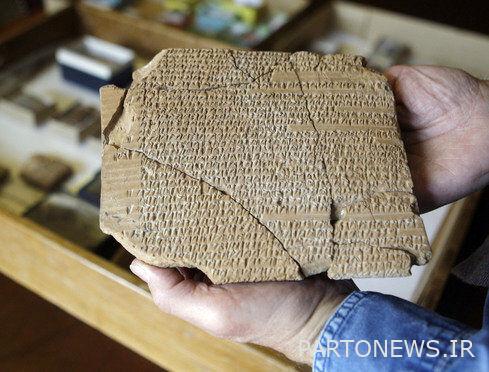Achaemenid tablets return to Iran from America

According to Moj news agency, Ali Darabi announced in his two-year performance report that 17,000 cultural-historical objects will be returned from the United States in the coming months. Achaemenid tablets which was given to the Chicago Institute for study and a part of it has already been returned to Iran.
The public relations of the Vice-Chancellor of Cultural Heritage also confirmed the return of the Achaemenid tablets to Iran in a tweet: “The good news is that more than 20,000 Achaemenid tablets belonging to Persepolis will be returned from America to our country by the end of this year.”
At the end of May 1402, Morteza Adibzadeh, the director general of the country’s museums, informed about the pursuit of the Ministry of Cultural Heritage, Tourism and Handicrafts to return the Achaemenid tablets to Iran.
In March of 1400, the Director General of Museums announced the readiness of the University of Chicago to return the remaining Achaemenid inscriptions to Iran, but in the middle of 1401, the return of these tablets was stopped. Ali Darabi – Deputy of Cultural Heritage of the Ministry of Cultural Heritage, Tourism and Handicrafts – announced in August 1401 that the United States would not allow the return of Achaemenid tablets to Iran.
In December 1401, Darabi stated in detail about this obstacle: A significant part of the issue of the return of Achaemenid tablets to Iran had been resolved, but due to the circumstances that occurred in the last two or three months and our foreign relations in general. It affected, created a big interruption and while the court ordered and part of the panels were packed to return to Iran, but now it is not done, because their return is tied to the relations between Iran and the United States. However, according to the court ruling, I am optimistic that there will be no problem in delivering the panels.
The Achaemenid tablets are among the works that were taken out of the country about 90 years ago with the approval of the Iranian government and were entrusted to the University of Chicago “Amant” for study and investigation. The boards were sent to America via Bushehr in 50 wooden boxes containing about 2,000 cardboard boxes and several oil drums that were dipped in melted paraffin in Persepolis (Perseh). These tablets were supposed to be returned to Iran three years after the study.
After studying and publishing the results of the studies in the form of several books, the return of the tablets began, and a small part of them was returned to the country in three stages; 179 pieces arrived in Tehran in the first shipment sent in 1327. The second shipment consisted of 37,000 pieces, which were returned to Iran in 1329, and the third shipment, 300 pieces of tablets, was delivered to Iran in 1383.
For the return of the fourth part of the plates to the country, a complaint but returned the sheet. The famous “Jenny Rubin” case was established against Iran. Reuters reviewed it in March 2016 and wrote about it: “Three years ago, a court in the United States ruled that Iran’s historical works that were on loan at the University of Chicago should be confiscated, and compensation of 71 million and 500 thousand dollars from its sale to the victims. Americans who were in suicide bombing in Jerusalem should be paid. As a result, the American court ordered the confiscation of these historical objects and ordered the sale of the tablets, but in the final review of the judges of the Supreme Court in the court held on March 2, 2016, the order to confiscate and sell the Iranian Achaemenid tablets was canceled.
After this stage, OFAC (US Office of Foreign Assets Control) had to issue the exit permit, and finally in 2018, after 84 years, the fourth shipment of tablets, which included 1,780 pieces of Achaemenid tablets, returned to Iran. Currently, 17,000 pieces of Achaemenid tablets are still in the hands of the Chicago Institute, which the Ministry of Cultural Heritage, Tourism and Handicrafts estimates will be returned to Iran by the end of the year.

